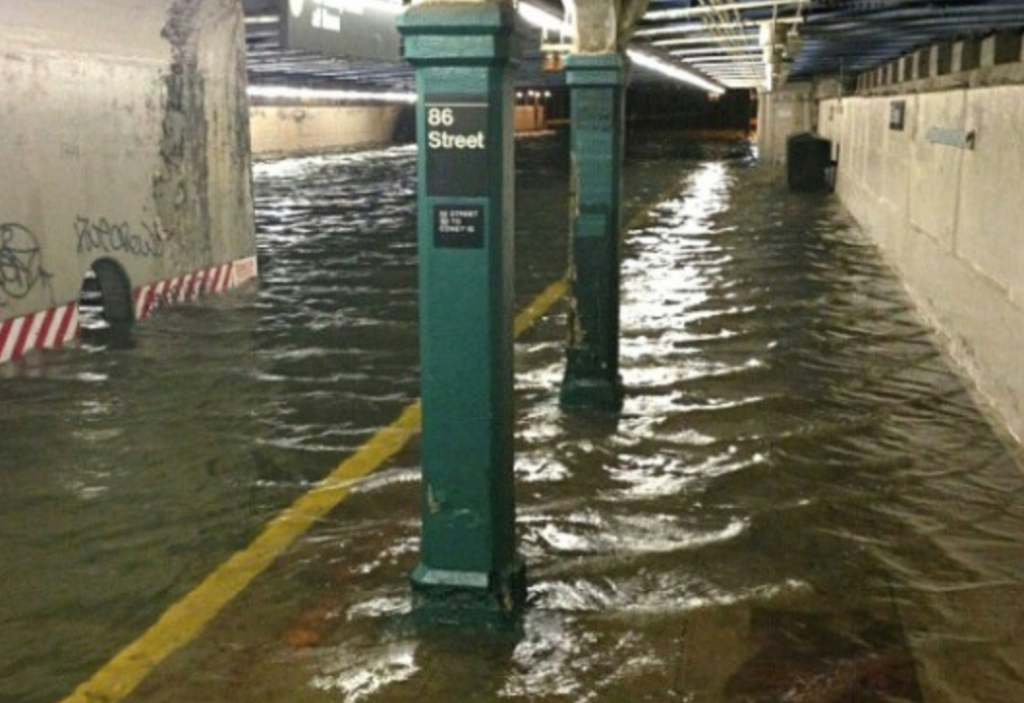Sitting in front of the computer, trying to pull an article out of it … Nietzsche was right: when you gaze long into the screen the screen also gazes into you!
Gaze long enough into Twitter …
Amazing video sent to us @KHOU, freeway concrete barrier broke away on Hwy 59 at San Jacinto Bridge. #HoustonFloods pic.twitter.com/xMUfcIPj3Y
— Daniel Gotera (@DTGoteraKHOU) August 29, 2017
… sooner or later you see everything!
Think a minute about the superstition of baseball players; rationality on the baseball diamond has limits. Because most of what happens on the field is random, players tend to obsess about the little things they can control: skipping carefully over the baselines painted on the field rather than treading on them, adjusting the straps on their batting gloves certain ways before readying themselves for each pitch. What they eat before games, how they dress and what they put in their pockets or around their necks, what they do to warm up: all of these and more are ritualized because these little actions appear to contribute in non-tangible ways to success in an extraordinarily difficult endeavor. Asked what kind of bat he uses, the ballplayer answers, “one with some hits in it.” Obviously, a solid piece of maple has nothing in it but the odd termite, yet at the metaphysical level, who can say for sure? Maybe there is a Hall of Fame career in there. The hunt commences until the proper bat is found, the player hangs onto it as long as possible until the hits are ‘used up’ or the bat breaks.
I need to be looking for a computer with articles in it …
The Gulf of Mexico is laying siege to Houston and environs: that is, the city of six millions has discovered the ocean has some water in it, billions of cubic meters have arrived unasked and have parked themselves where they are … ‘inconvenient’. Here are consequences unwinding under our noses; of our unwillingness to admit responsibility for ourselves and our actions. Storms happen but the combination of unrestricted real estate development and rising overall temperatures offers outcomes we have so far been pleased to ignore.
Harvey is the latest in a long series of storm-related flooding events one following hard on the heels of the other: New Orleans earlier this month, Houston last year and the year before and the year before that: the Sandy superstorm that flooded New York City and the subway; Katrina and Floyd and Hugo and Allison.
USA, India, Pakistan, Saudi Arabia, China. The hits keep coming. Spengler was wrong, the West is not declining but drowning, leaving behind a bathtub ring, mountains of moldy sheetrock and rotten sofas.
There is also the routine ‘non-storm related’ flooding: (Miami Herald):
The king tide topped seawalls, rose through storm drains and crept up oceanfront parks at the tide’s peak, creating images that underscore concerns about the impacts of sea level rise on Florida’s coastal communities.Scientists say the seasonal high tides, which have created a nuisance in places like Miami Beach, Fort Lauderdale and the Keys for decades, are increasingly compounded by the rising seas that are spurred by climate change. Studies have found that millions of Floridians are at risk of being displaced by rising seas.
Miami, Bangladesh, a few obscure islands here and there; Norfolk and the Chesapeake Bay. Don’t worry, be happy soggy!
Neither high ground nor deserts turn out to be much help: Ellicott City, Maryland was flooded last year after a ‘freak’ thunderstorm appeared over the area bringing the gift of six inches of rain in a little over an hour. A racing, ten-foot wall of water and mud gutted residences and businesses leaving the town in shambles. A month ago, Goslar Harz in Germany was inundated after storms unloaded over Lower Saxony. Germany has been flooding repeatedly as has England, France, Yemen. Deserts have become places where people drown, (BBC, 2009).
Flood Deaths in Saudi Arabia Rise to About 100The number of dead in floods following Saudi Arabia’s heaviest rains for years has risen to around 100, officials say.
Dozens are said to be missing and some reports suggest the death toll will rise further in the city of Jeddah.
The authorities say they are providing food and temporary housing for those made homeless and considering how to compensate the worst affected.
But critics accuse them of negligence and say this “disaster” should never have been allowed to happen.
A lawyer has threatened to sue the Jeddah authorities, while thousands of people turned to the social networking site Facebook to vent complaints about inadequate infrastructure on a specially created webpage.
Many of the victims in the Red Sea port city died in their vehicles after the flash floods – either by drowning or in car crashes. Some reportedly were killed when bridges collapsed on top of them.
The casualties have not be counted in Houston but it is likely, as in Jeddah, that the greatest number of victims drowned in their cars attempting to navigate streets and highways turned into rivers.
One would think the managers would take sensible steps to address risk. Cities cannot be moved but mitigation is possible: there have been storms and floods for millions of years these events are not foreign to humans. Houses and other buildings are lifted above the flood level, (sprawling) development in valleys and low-lying areas is avoided. Open spaces that absorb water are left undisturbed or brought back to their natural state. Meandering watercourses hold more floodwaters than do concrete canals and drainage ditches which simply channel water from some neighborhoods to others: the solution involves restoring the old watercourses. Water can be adapted to, we’ve done it before, we have to choose to do so now.
Our all-out industrial assault on our climate can be mitigated as well: It isn’t hard to understand using fewer machines and de-industrializing our agriculture, all that is needed is the will to do so. The bottom line is resource conservation: we either conserve voluntarily or are compelled by the force of events … fire, floods and droughts. The choices aren’t difficult to understand, it is only the beguiling metaphysics of disproof that appear closer to hand in the short run and less costly than conservation. Yet the short term never lasts, it invariably morphs into the long variety; look out the window in Houston and watch a thousand ton concrete barrier float by … what comes by afterward? Nobody really wants to find out.
The adaptations long delayed are turning out to be absolutely necessary and immediate. Aside from the human costs, displacement from expensive real estate means declining prices with adverse affects to the credit regime which propels our entire economy. A modest real estate ‘correction’ was a contributor to the 2008 finance crisis. As their borrowers fell ‘underwater’ and defaulted on their payments bank collateral was worth less, leading to a system-wide margin call on lenders. That such an unpleasant eventuality might occur had become unthinkable to the lenders and system regulators. Banks ignored risk even as borrowers were mailing back their house keys. Like the ballplayer and his hit-filled bat, risks were assumed to be abstract and unprovable … until it was too late.
At some point the metaphysics goes into reverse: the ‘idea’ of displacement gains more currency than what the actual losses themselves might indicate. If one city is vulnerable then so are others. If Houston and New Orleans suffer real estate losses, what about Philadelphia or Boston? London, Shanghai, Hong Kong and Tokyo sit at sea level, so does San Francisco and Mumbai, Lagos and Sydney. Cities on the sea made sense when commerce was wind-powered and cargoes needed loading and unloading by hand. Economic convenience was an asset that turns out over that longer term to be a liability with astronomical costs attached.
Because it isn’t possible to link with absolute certainty flooding to over-development or warming climate, the metaphysical argument permits risk of to be ignored even after it materializes as actual costs that must be met by real people. Context matters: a ballplayer’s gesture is funny but the inundation of big cities is serious business: a trillion here and a trillion there soon adds up! The costs of reconstruction — real or imagined — loom larger in the mind than what cities can earn … the metaphysical notions are then turned upside down: it becomes a matter of opinion whether soon-to-be rotting, decrepit cities are worth anything at all.
After weeks or perhaps a month, water in Houston will recede and the repairs will begin along with a tally of the costs. Economists will step forward and insist that rebuilding efforts will be good for GDP and the local economy, that insurance companies are flush, that everyone will be made whole, yadda-yadda. The economists’ metaphysics ignores the cumulative effect of recurring floods, where the same houses are repaired at someone’s expense year after year. It is an absolute certainty Houston be flooded again; perhaps next year … or even next month. Storms expose our vulnerability: our infrastructure is untimely and inadequate. Even as each high tide in Miami reminds residents of pending flood, developers in Miami build expensive condos on the ocean with customers a lining up to buy. It is a collective suspension of disbelief that works until it doesn’t any more, when the bat runs out of hits.

